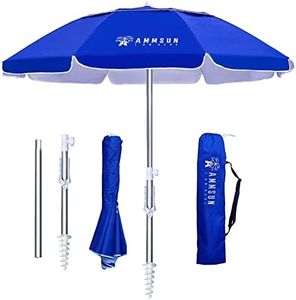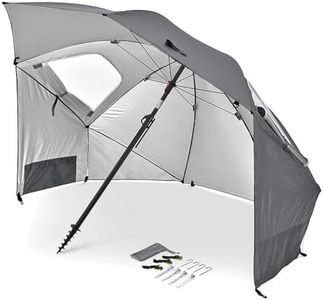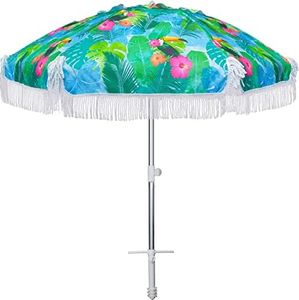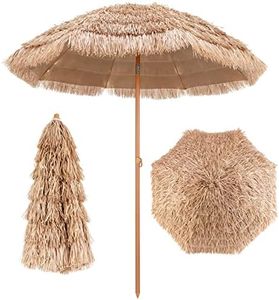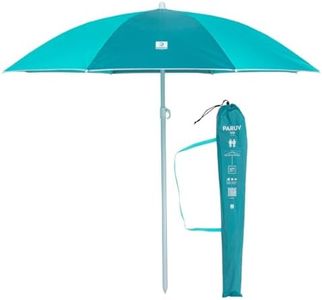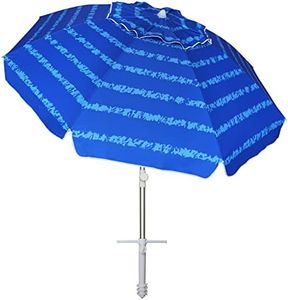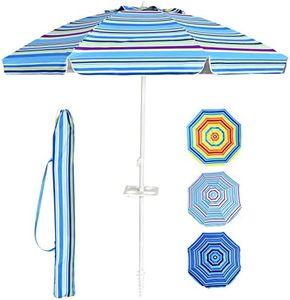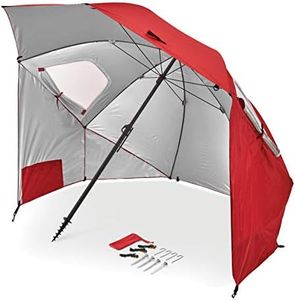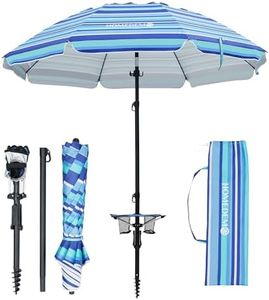We Use CookiesWe use cookies to enhance the security, performance,
functionality and for analytical and promotional activities. By continuing to browse this site you
are agreeing to our privacy policy
10 Best Wind Resistant Beach Umbrellas
From leading brands and best sellers available on the web.Buying Guide for the Best Wind Resistant Beach Umbrellas
Choosing a wind-resistant beach umbrella is important for a safe and enjoyable day at the shore. The right umbrella not only shields you from the sun but also stands up well to breezy or gusty conditions, making your time outside worry-free. By understanding the key features that affect stability and ease of use, you can pick an umbrella that matches your needs and the typical weather you’ll face at the beach.Wind Resistance RatingWind resistance refers to how well an umbrella can withstand wind without tipping over or blowing away. Some umbrellas are specifically tested or rated for wind strength, often describing the maximum wind speeds they can endure. Generally, umbrellas might be grouped into basic (light breeze), moderate (gentle to moderate winds), and high (strong winds) segments. If you frequent beaches known for gentle breezes, basic or moderate-rated umbrellas may suffice, but for windier, exposed locations, choose one rated for higher resistance to keep your shade secure.
Canopy Design and VentilationThe design of the canopy, especially whether it has vents, plays a big role in wind resistance. Vented canopies have small openings at the top that allow wind to pass through, which helps prevent the umbrella from turning inside out or lifting off. Umbrellas are commonly available with no vent (best for very calm conditions), single vent (good for moderate breezes), or double vent (offers better stability in gustier winds). If you plan to visit windswept beaches, a double-vented design is often the safest bet.
Pole and Ribs MaterialThe pole and ribs of the umbrella provide the main framework, and their material affects both strength and weight. Common options include aluminum, steel, and fiberglass. Aluminum is lightweight but may bend in high winds, steel is strong but quite heavy, and fiberglass is both flexible and tough against snapping. For wind-prone conditions, fiberglass ribs are often ideal, while moderate conditions may be fine with strong steel or reinforced aluminum.
Anchor SystemHow an umbrella stays anchored in the sand is vital for wind resistance. The anchor system can be a simple pointed end, a screw design, or even come with additional sandbags or built-in augers. Basic spike anchors are easy to use but hold less well in wind, while screw or auger types twist deeper into the sand for a firmer hold. If you visit beaches with fine sand and frequent breezes, a screw or auger anchor is preferable to help prevent accidental lift-offs.
Size and WeightThe overall size and weight of the umbrella affect how practical and stable it will be at the beach. Larger umbrellas provide more shade but can catch more wind, making them prone to toppling if not well anchored, while smaller umbrellas are generally more manageable but offer less coverage. For typical solo or couple use, a smaller to medium umbrella balances stability and coverage, but for families or big groups, choose a wider umbrella with strong wind-resistant features.
